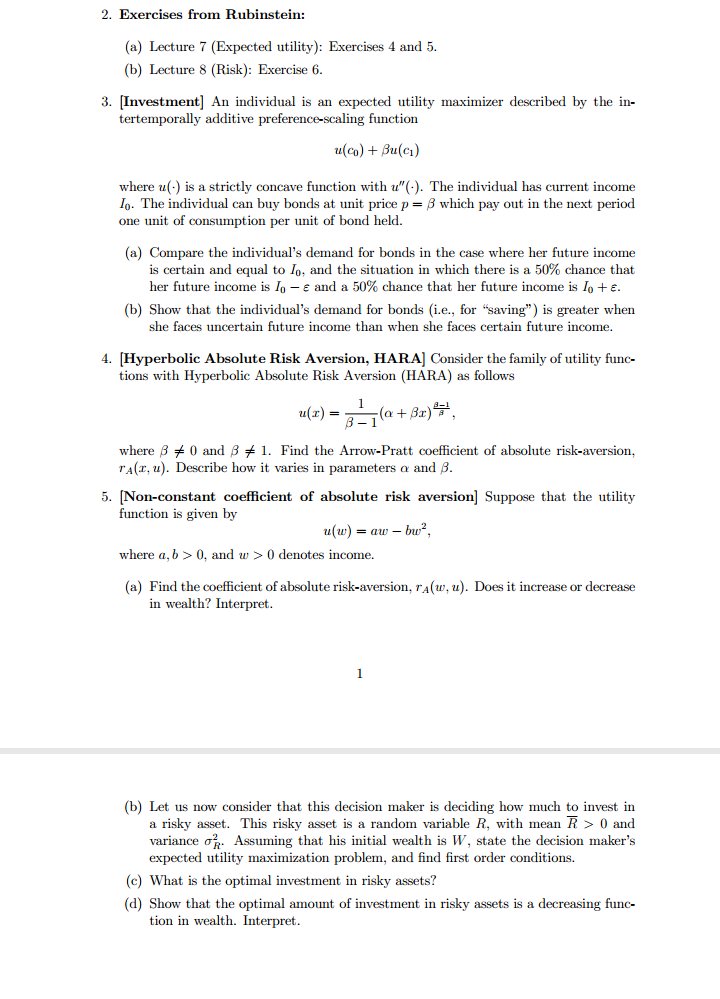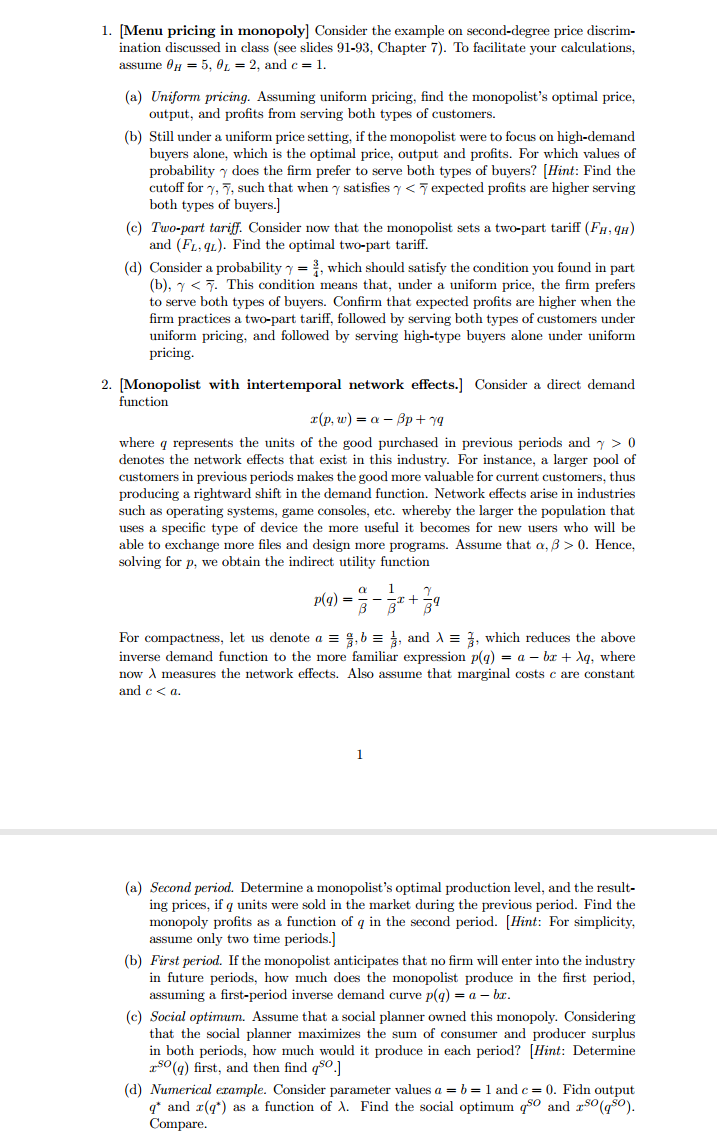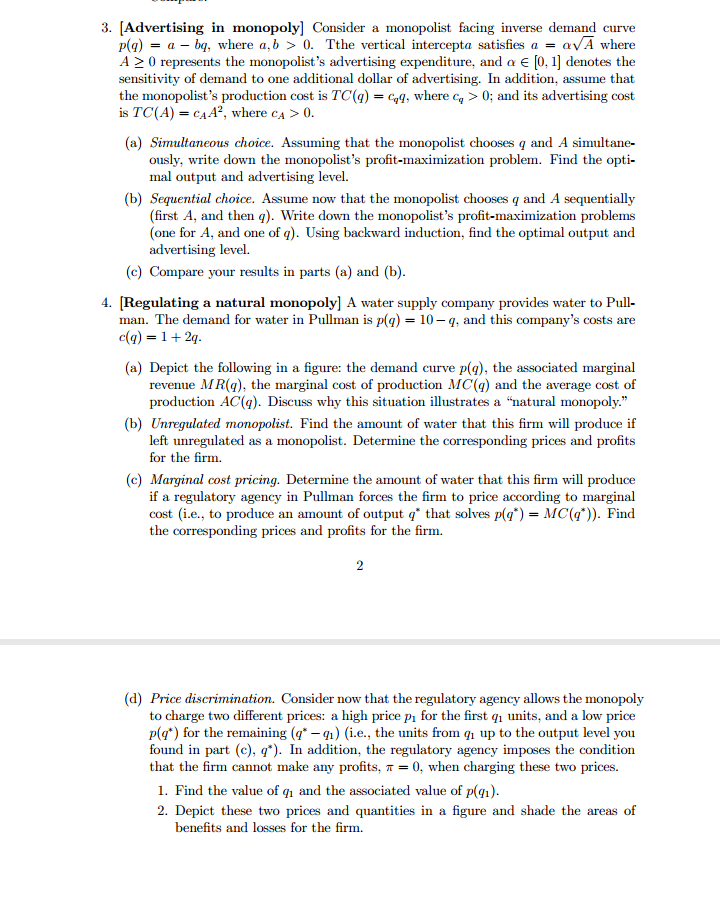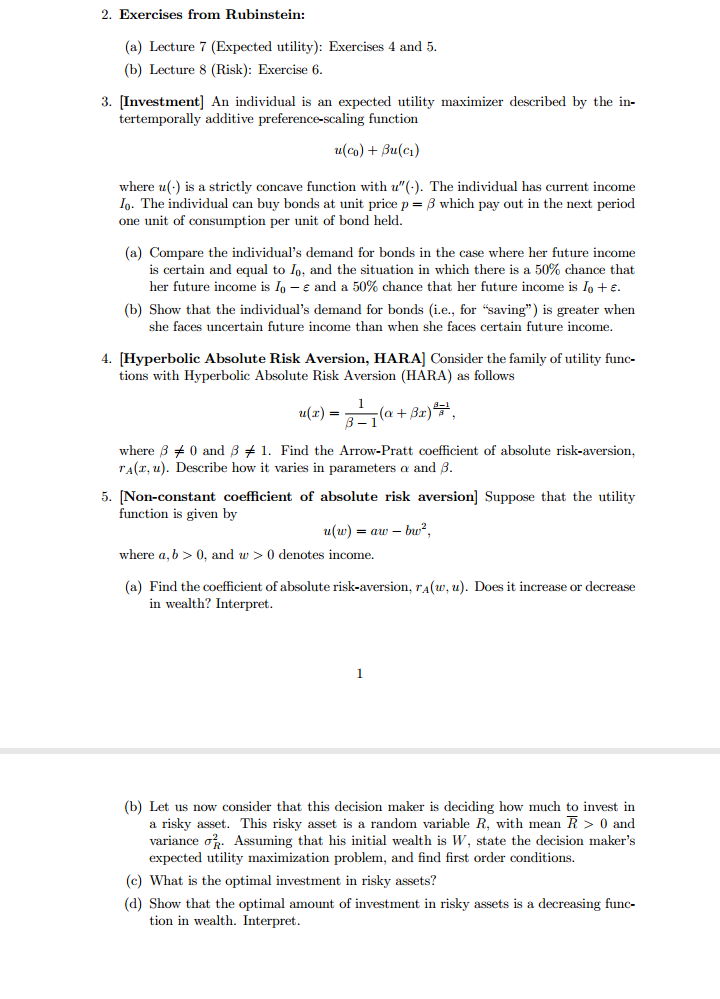
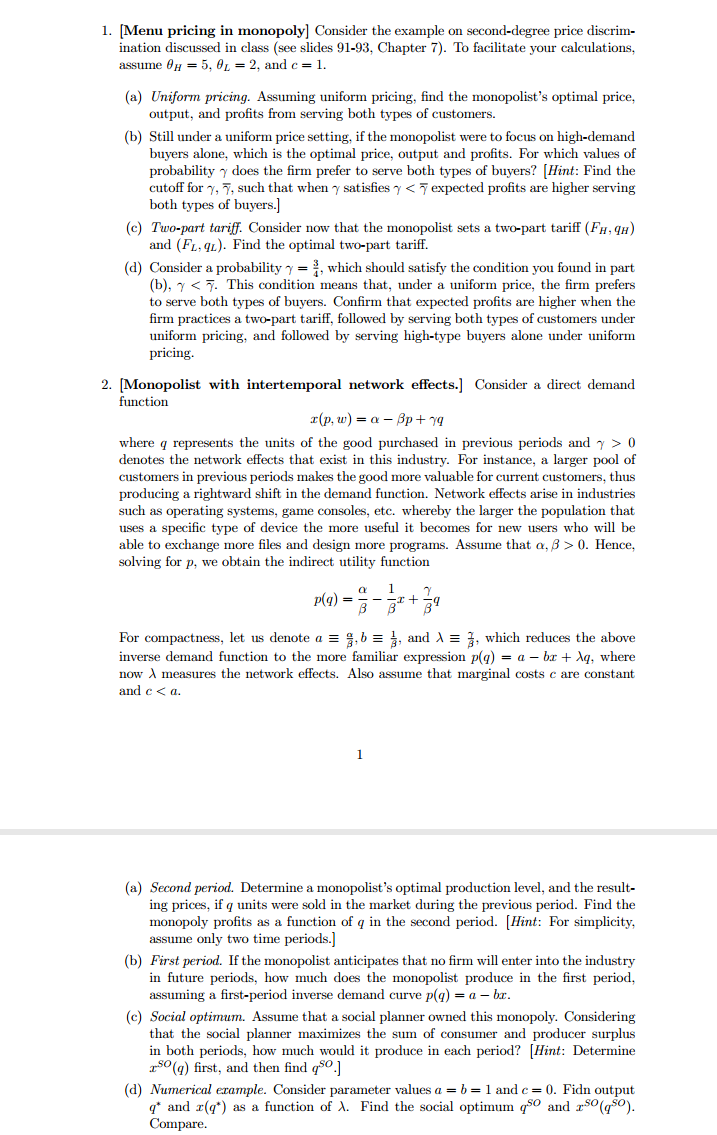
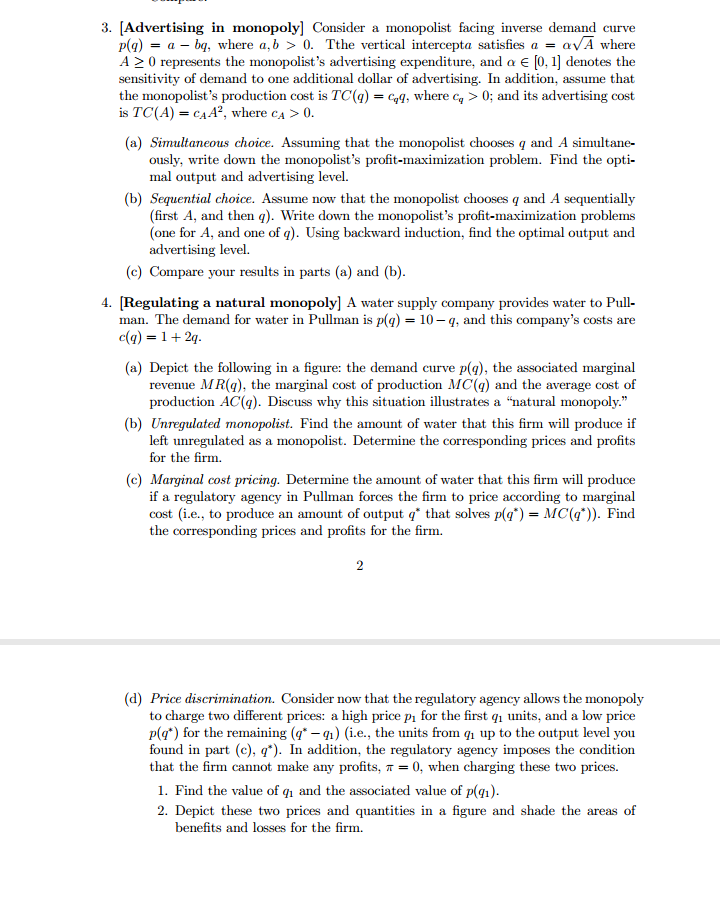
Quiz 13....
2. Exercises from Rubinstein: (a) Lecture 7 (Expected utility): Exercises 4 and 5. (b) Lecture 8 (Risk): Exercise 6. 3. [Investment] An individual is an expected utility maximizer described by the in- tertemporally additive preference-scaling function u(co) + Bu(ci) where u(.) is a strictly concave function with u"(.). The individual has current income lo. The individual can buy bonds at unit price p = 8 which pay out in the next period one unit of consumption per unit of bond held. (a) Compare the individual's demand for bonds in the case where her future income is certain and equal to Jo, and the situation in which there is a 50% chance that her future income is Jo - and a 50% chance that her future income is Jo + z. (b) Show that the individual's demand for bonds (i.e., for "saving" ) is greater when she faces uncertain future income than when she faces certain future income. 4. [Hyperbolic Absolute Risk Aversion, HARA] Consider the family of utility func- tions with Hyperbolic Absolute Risk Aversion (HARA) as follows u(x) = 3-1 ( a + BI), where 8 0 and B # 1. Find the Arrow-Pratt coefficient of absolute risk-aversion, TA(r, u). Describe how it varies in parameters o and B. 5. [Non-constant coefficient of absolute risk aversion] Suppose that the utility function is given by u(w) = aw - biz, where a, b > 0, and w > 0 denotes income. (a) Find the coefficient of absolute risk-aversion, TA(w, u). Does it increase or decrease in wealth? Interpret. (b) Let us now consider that this decision maker is deciding how much to invest in a risky asset. This risky asset is a random variable R, with mean R > 0 and variance op. Assuming that his initial wealth is W, state the decision maker's expected utility maximization problem, and find first order conditions. (c) What is the optimal investment in risky assets? (d) Show that the optimal amount of investment in risky assets is a decreasing func- tion in wealth. Interpret.1. [Menu pricing in monopoly] Consider the example on second-degree price discrim ination discussed in class (see slides 91-93, Chapter 7). To facilitate your calculations, assume OH = 5, 01 = 2, and c = 1. (a) Uniform pricing. Assuming uniform pricing, find the monopolist's optimal price, output, and profits from serving both types of customers. (b) Still under a uniform price setting, if the monopolist were to focus on high-demand buyers alone, which is the optimal price, output and profits. For which values of probability y does the firm prefer to serve both types of buyers? [Hint: Find the cutoff for y, 7, such that when y satisfies y 0 denotes the network effects that exist in this industry. For instance, a larger pool of customers in previous periods makes the good more valuable for current customers, thus producing a rightward shift in the demand function. Network effects arise in industries such as operating systems, game consoles, etc. whereby the larger the population that uses a specific type of device the more useful it becomes for new users who will be able to exchange more files and design more programs. Assume that o, 3 > 0. Hence, solving for p, we obtain the indirect utility function P(9) = For compactness, let us denote a = g. b = ;, and > = , which reduces the above inverse demand function to the more familiar expression p(q) = a - br + q, where now A measures the network effects. Also assume that marginal costs c are constant and c 0. Tthe vertical intercepta satisfies a = ov A where A 2 0 represents the monopolist's advertising expenditure, and o E [0, 1] denotes the sensitivity of demand to one additional dollar of advertising. In addition, assume that the monopolist's production cost is TC(q) = c,q, where c, > 0; and its advertising cost is TC(A) = CAA', where CA > 0. (a) Simultaneous choice. Assuming that the monopolist chooses q and A simultane- ously, write down the monopolist's profit-maximization problem. Find the opti- mal output and advertising level. (b) Sequential choice. Assume now that the monopolist chooses q and A sequentially (first A, and then q). Write down the monopolist's profit-maximization problems (one for A, and one of q). Using backward induction, find the optimal output and advertising level. (c) Compare your results in parts (a) and (b). 4. [Regulating a natural monopoly] A water supply company provides water to Pull- man. The demand for water in Pullman is p(q) = 10-q, and this company's costs are c(q) = 1+ 2q- (a) Depict the following in a figure: the demand curve p(q), the associated marginal revenue MR(q), the marginal cost of production MC(q) and the average cost of production AC(q). Discuss why this situation illustrates a "natural monopoly." (b) Unregulated monopolist. Find the amount of water that this firm will produce if left unregulated as a monopolist. Determine the corresponding prices and profits for the firm. (c) Marginal cost pricing. Determine the amount of water that this firm will produce if a regulatory agency in Pullman forces the firm to price according to marginal cost (i.e., to produce an amount of output q" that solves p(q*) = MC(q*)). Find the corresponding prices and profits for the firm. 2 (d) Price discrimination. Consider now that the regulatory agency allows the monopoly to charge two different prices: a high price p, for the first q units, and a low price p(q') for the remaining (q* - q1) (i.e., the units from q up to the output level you found in part (c), q"). In addition, the regulatory agency imposes the condition that the firm cannot make any profits, * = 0, when charging these two prices. 1. Find the value of q and the associated value of p(q1). 2. Depict these two prices and quantities in a figure and shade the areas of benefits and losses for the firm



